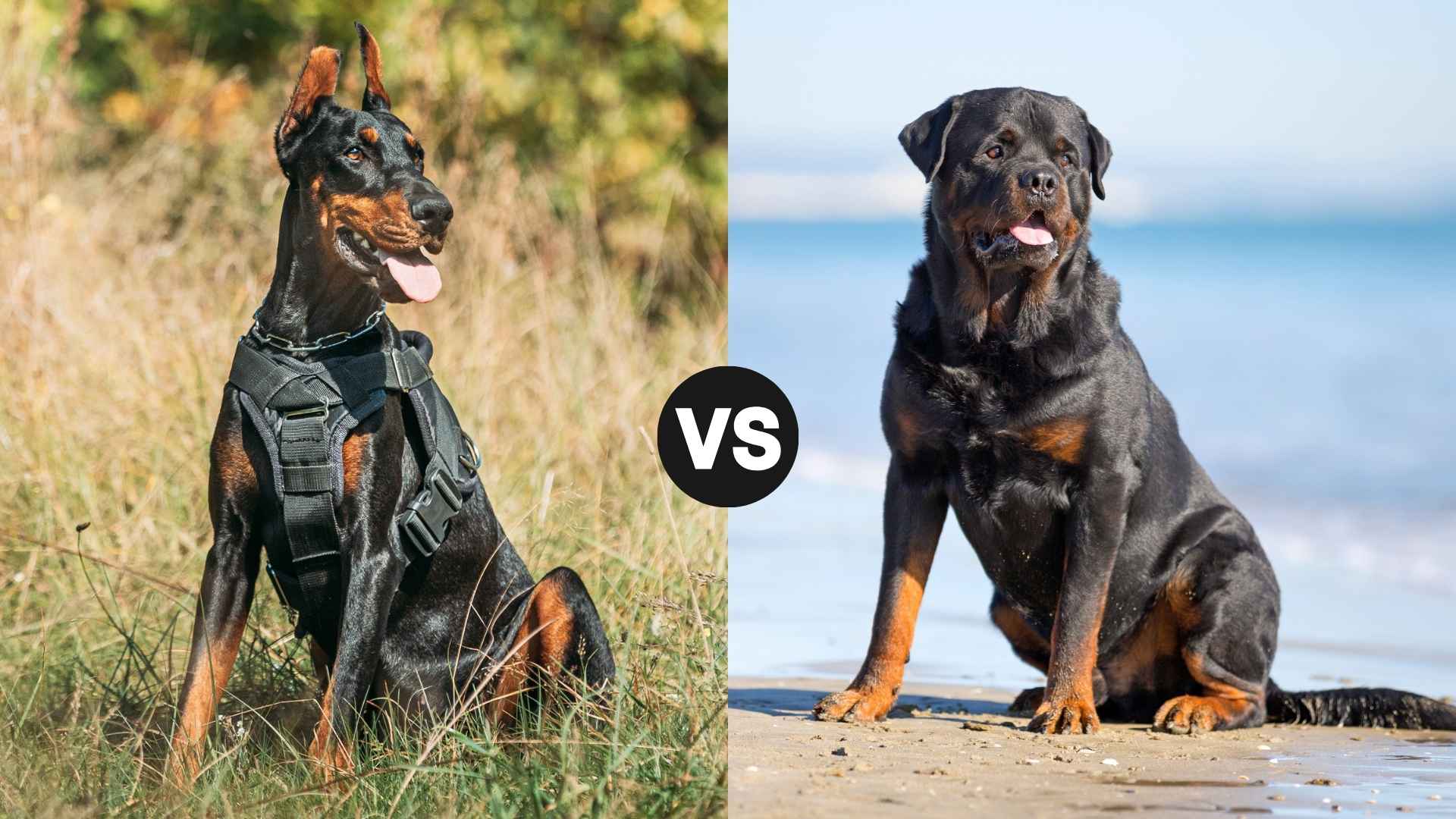If you are stuck between getting a Doberman Pinscher or a Rottweiler, first of all, we get you! Doberman Vs Rottweiler: It is a classic showdown between two of the most powerful, loyal, and head-turning guards in the world.
Both breeds are iconic. Both command respect. And both can make great pets, if you know what you are getting into. So, what is there for you to know about? Well, their size, temperament, health concerns, and much more. How much of a protective dog are they? How much of confident are they?
We have outlined everything for you. By the end of this, you will know which of these two breeds is a better choice for your lifestyle (and your backyard).
Let’s go!!
Doberman vs. Rottweiler
A Breed Standard Comparison at a Glance!
|
Trait |
Doberman Pinscher |
Rottweiler |
|---|---|---|
|
Height |
24-28 inches |
22-27 inches |
|
Weight |
60-100 pounds |
80-135 pounds |
|
Build |
Lean and athletic |
Stocky and powerful |
|
Coat Type |
Short & smooth |
Short & double |
|
Coat Colors |
Black, red, blue, and fawn |
Black, with rust, mahogany, and tan markings |
|
Temperament |
Intelligent, fearless, determined |
Confident, steady, courageous |
|
Social Level |
People-oriented, loving, affectionate |
Loyal and well-mannered |
Size Comparison: Doberman vs. Rottweiler
Both the Doberman Pinscher and Rottweiler fall into the category of large breeds. But their body composition and stature give them very different physical vibes. According to the American Kennel Club, we can outline their size comparison as:
Dobermans have a height of almost 24-28 inches, while Rotties have a height of 22-27 inches.
The Dobbie weighs in at 60-100 pounds, and the Rottie has a range of 80-135 pounds. Both males and females are included in this.
Dobermans have an athletic and leaner build, while Rottweilers have a stocky and powerful build.
The Doberman Pinscher looks like a sleek sprinter. They have long legs, very defined muscles, and they are always on alert. Meanwhile, the Rotties are more heavyweight. These dogs have broad chests, thick necks, and a physical presence that says, “don’t mess with me”.
|
Trait |
Doberman Pinscher |
Rottweiler |
|
Height |
24-28 inches |
22-27 inches |
|
Weight |
60-100 pounds |
80-135 pounds |
|
Build |
Lean and athletic |
Stocky and powerful |
In daily life, this difference plays out in how they move and play. Dobermans tend to leap, sprint, and zigzag. But Rottweilers are more grounded and methodical in their movements. Each dog is powerful in its way. One with agility, the other with sheer strength.
Overall Appearance and Physical Traits
Let’s talk about appearance. Because, admit it, appearance is part of the reason you are drawn to these breeds in the first place.
What does a Dobbie look like?
Sleek and tall.
Natural ears are floppy (though many have cropped ears and docked tails)
Britannica mentions they have a short and smooth coat with common colors like black and rust, blue, or fawn
And what does a Rottie look like?
Compact but muscular dog
Thick and short coats, actually double coats: always black with distinct rust colored markings
Ears are always natural and floppy
Dobermans have that “refined danger” look. We can safely say they are the James Bond in dog form. Rottweilers, on the other hand, walk around like a bouncer. They are calm dogs, intimidating and very aware of their surroundings.
Both breeds look stunning in their own right. Just be ready to get some heads turned when you walk down the street. When it comes to exercise and training needs, most dogs need activity. But these two good dogs need A LOT!!
Dobermans need at least an hour of hard play or running. They love training and mental games, and get bored easily when under-stimulated.
Rottweilers also need enough exercise, but they are less hyper about it. They enjoy jobs like pulling carts and carrying backpacks. More stubborn dogs in training, but very capable.
Breed Classification: Understanding Their Breeding Groups
According to the American Kennel Club, both the Doberman Pinscher and Rottweiler belong to the working dogs group. It means they were not bred to nap on couches. They were bred for some serious jobs.
So, what is a Doberman Pinscher’s job?
Originally developed by a German tax collector (seriously!) to serve as a personal protector
Excelled in roles as police dogs, military dogs, and search and rescue workers
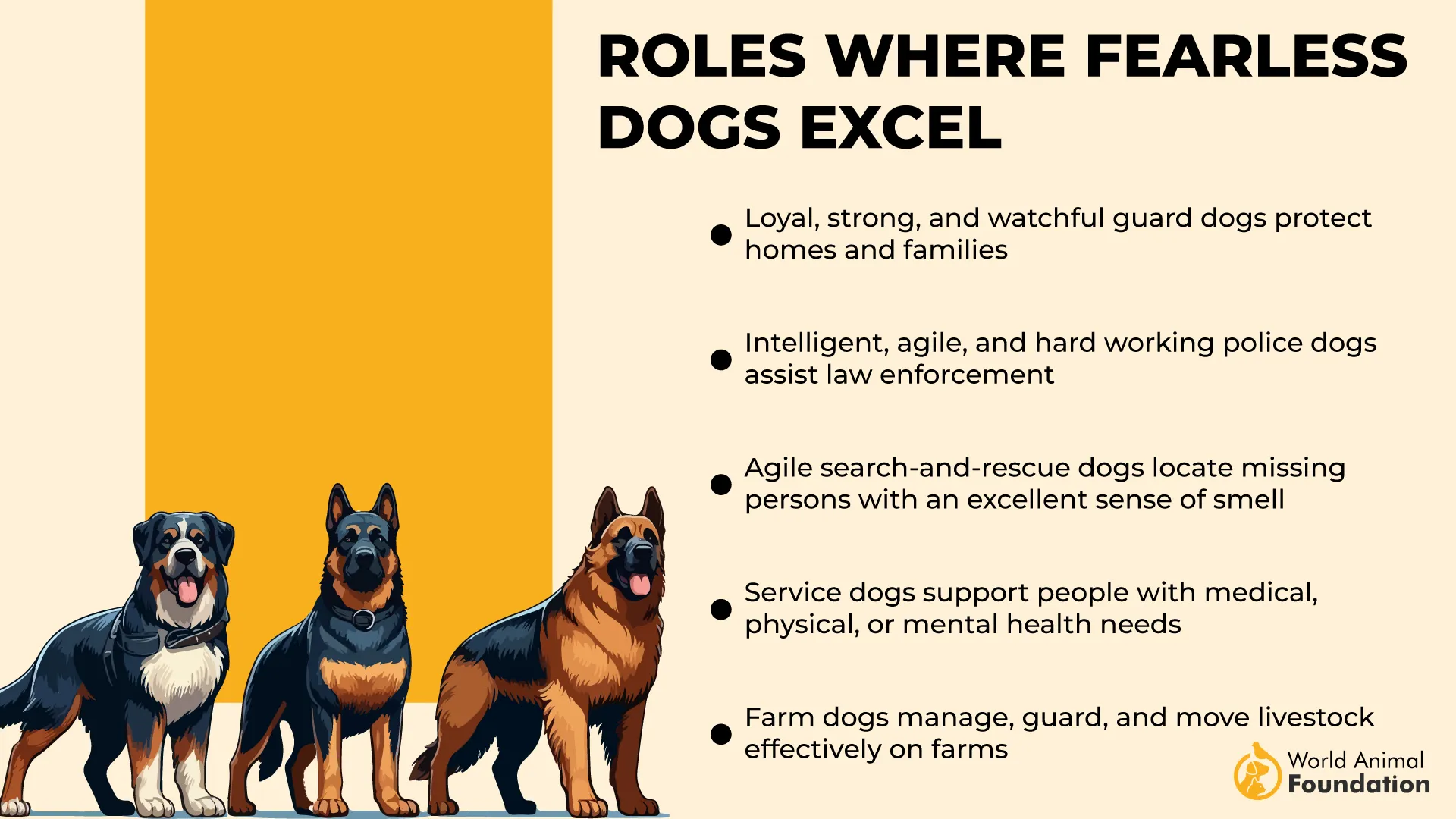
What does a Rottweiler do best?
Has ancient Roman roots, originally used for guarding livestock and pulling meat carts
Became known for being quiet, strong, and dependable guard dogs
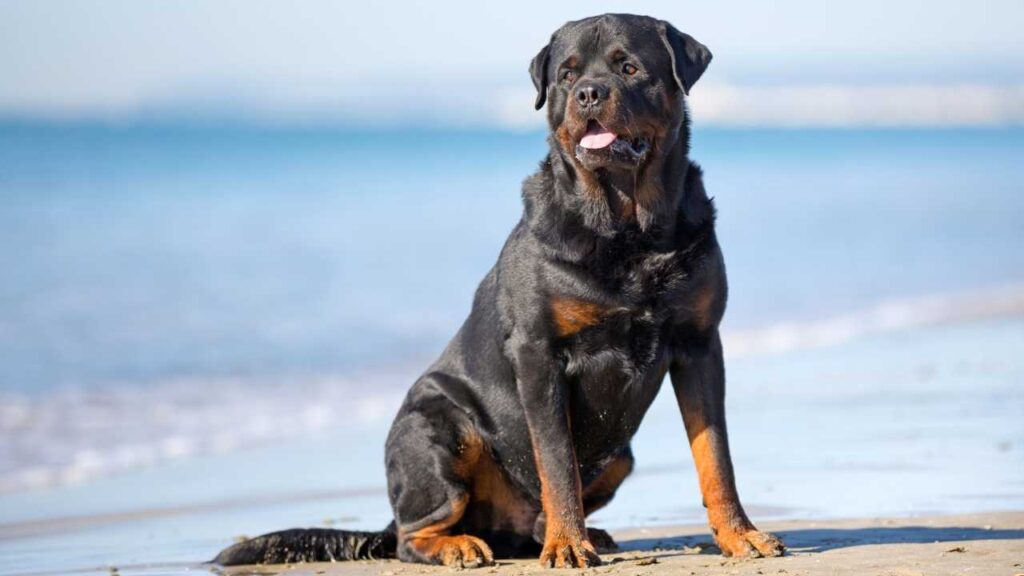
In short, these are not your average couch potatoes. These breeds require training, the right socialization, daily exercise, and a sense of purpose. If they don’t have a job to do, they will find one… and you might not like what they choose. Just know that your furniture might be at risk.
Yes! They can get bored without a job!!
Temperament & Personality Differences
Now, here’s where things get interesting. Both breeds are protective, loyal, and brave. But their personalities show up in different ways.
Dobermans Temperament:
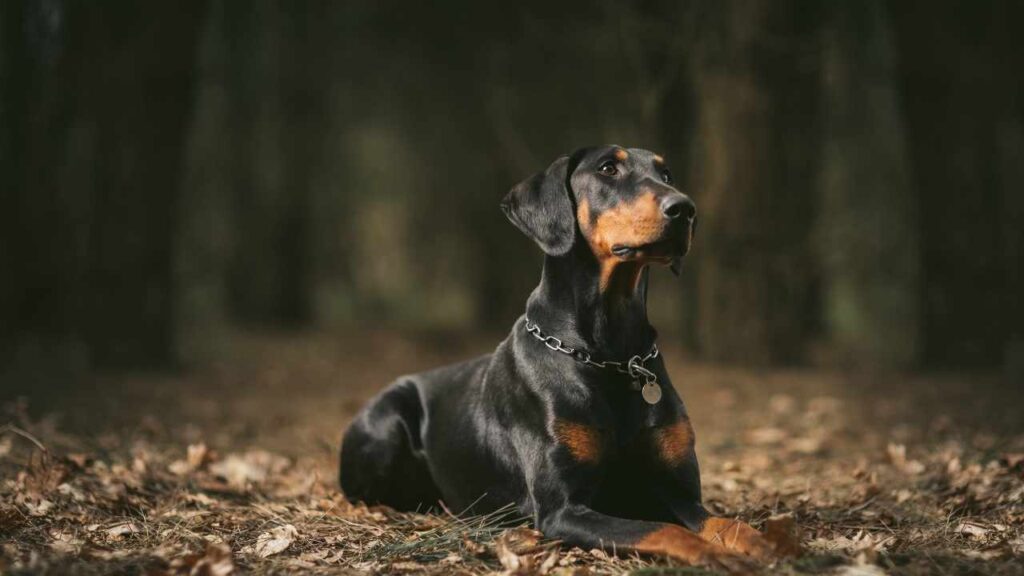
Super smart and alert
Very attached to their humans (often called Velcro dogs)
Naturally wary of strangers but affectionate with family
Needs structure, praise-based training, and early socialization
Rottweilers Temperament:
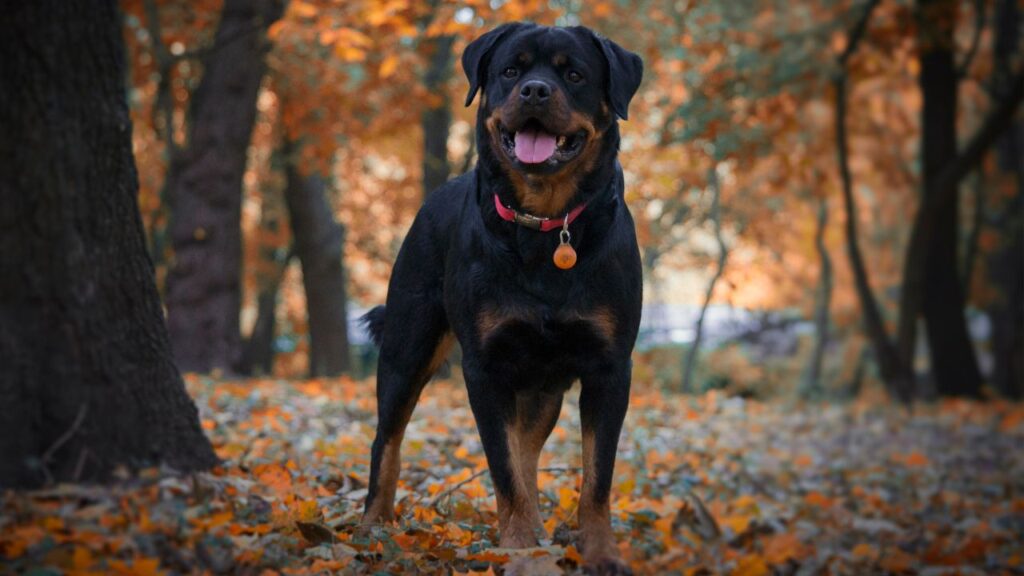
Calm, steady, and self-assured
Loyal and brave, but more reserved personality
May test boundaries, especially young Rotties
Great with children when raised well, but need to be monitored with other pets
Health Overview: Common Issues in Both Breeds
Let’s talk health. Loving a dog means caring for them long-term, which includes understanding their health problems, vet bills, and all.
Doberman health issues:
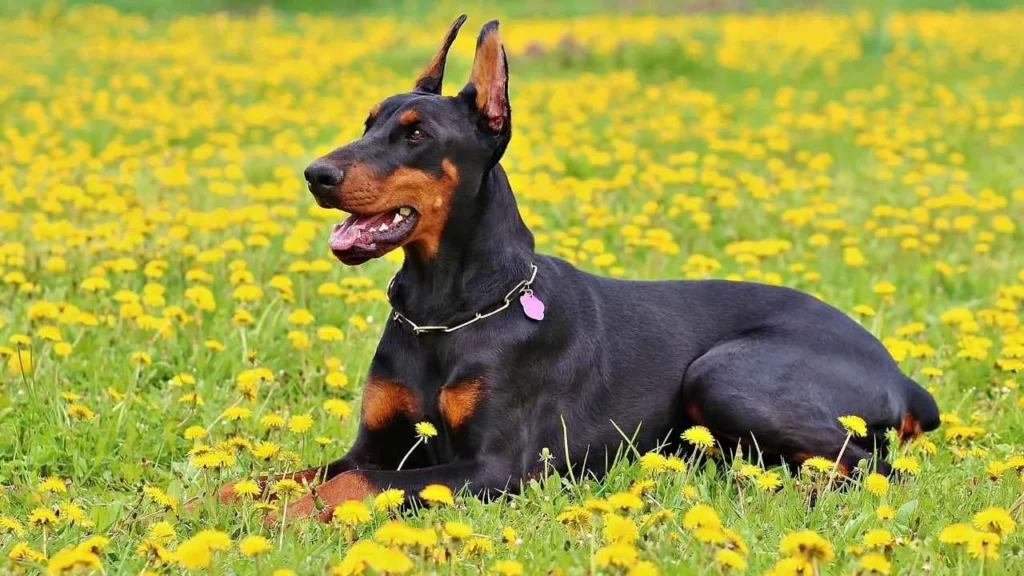
Dilated Cardiomyopathy (DCM), which is a common heart disease
Progressive Retinal Atrophy, which causes vision loss
Hip Dysplasia, which is a joint instability common in large dogs
Rottweiler health issues:
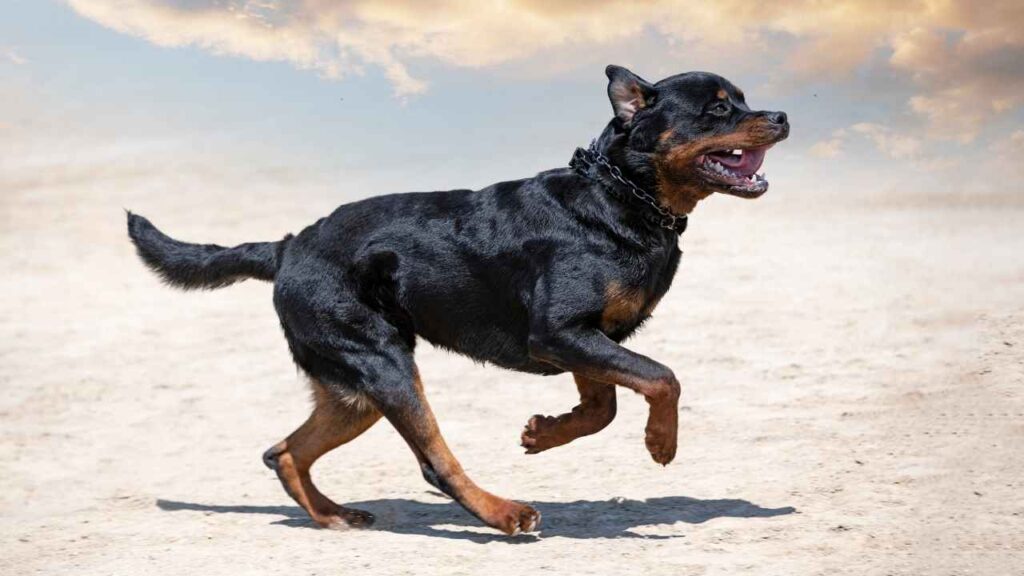
Hip and Elbow Dysplasia
Osteosarcoma (aka bone cancer)
Heart disease, mostly Subaortic Stenosis
These health problems are no joke. That’s why it matters to find a good breeder or a reputable breeder who screens for common genetic conditions. Also, get pet insurance. Both these breeds are prone to health problems that can be expensive and heartbreaking!!
Both dogs are fairly low maintenance in the grooming department, but there are still some things you should know:
The Doberman has a short coat, minimal shedding. They are sensitive to cold weather and need regular ear cleaning.
Rottweiler’s double coat means more hair in shedding season. Bathing 1-2 times a month is plenty. They need regular brushing to avoid matting and skin issues.
So, if you hate vacuuming, go Doberman Pinscher club!! If you don’t mind a little extra fur for a lot of extra muscle, go Rottie!!
Lifespan: How Long Do They Typically Live?
If you want to know who sticks around longer, here’s the scoop:
Doberman Pinscher lives up to 10-12 years, sometimes up to 14 with good care.
Rottweilers live up to 9-10 years (some Rottweiler owners report even less)
Now, you must be gearing up to know why this gap? Rotts tend to have a shorter lifespan due to their size and higher rate of certain cancers. Dobermans live slightly longer, but they are still at greater risk of heart issues.
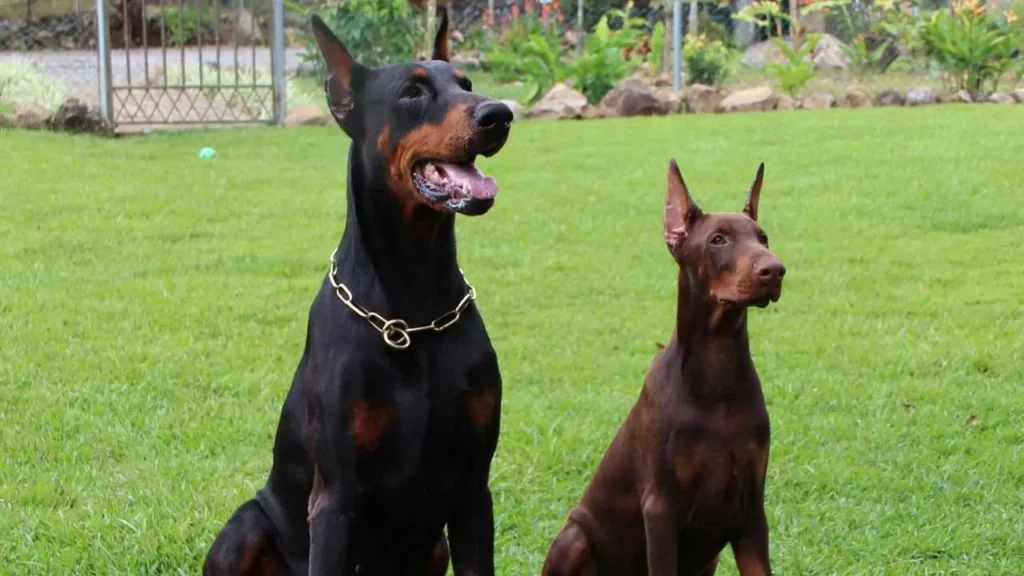
With proper training from a young age, exercise, and a vet who knows their stuff, you can help your pup live their best life, however long that may be.
Conclusion
The Doberman Vs Rottweiler debate is not about picking a winner out of many large breeds. It is all about getting a dog that matches your energy and heart and gives you the level of protection you want. No matter which dog you choose, be ready for the ride of your life.
Both of these are intelligent, have high energy, need training to get along well with other dogs, understand new commands, are family-oriented, and both can make great family pets when raised right.
Now, that is a puppy worth waiting for!!


